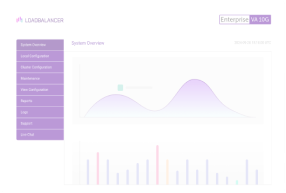Load balancing Temenos Transact
Benefits of load balancing Temenos Transact
Load balancing Temenos Transact offers a number of benefits, including:
- Scalability and performance optimization: Load balancing intelligently distributes incoming transactional load across multiple application servers. It ensures that no single server is overwhelmed during peak periods, such as end-of-day processes or high-volume transactions. By spreading the work evenly, it maximizes the overall volume of transactions the system can process per second, leading to faster response times for users and customers. It allows the financial institution to achieve near-linear scalability. As transaction volumes grow, you can simply add more application servers behind the load balancer to increase capacity without major architectural changes.
- High Availability (HA) and operational resilience: Downtime in banking is extremely costly and damaging to customer trust. Load balancing provides crucial redundancy and resilience. If a server fails, becomes slow, or stops responding, the load balancer’s health checks instantly detect the issue and seamlessly redirect all new traffic to the remaining healthy servers. This ensures continuous service and zero downtime for the application. Global Server Load Balancing (GSLB) extends this principle across multiple data centers or regions, allowing traffic to be routed to the nearest or most available site globally for robust disaster recovery.
- Simplified maintenance and risk reduction: Load balancing allows IT teams to manage the core banking environment with minimal disruption. It enables IT staff to take a server out of the active pool for maintenance, upgrades, patching, or troubleshooting (a process known as draining connections) while the remaining servers continue to handle live traffic. Once the work is complete, the server can be returned to the pool, all without impacting the end-user. You can isolate a specific server or set of servers for testing new features or performing low-risk changes, reducing the risk to the entire production environment.
About Temenos Transact
Temenos Transact (formerly T24) is a functionally rich, flexible and agile core processing engine that enables financial institutions to offer personalized, customer-relevant retail banking products, while allowing for lower operational costs and increased Return on Equity (ROE).
Why Loadbalancer.org for Temenos Transact?
Loadbalancer’s intuitive Enterprise Application Delivery Controller (ADC) is designed to save time and money with a clever, not complex, WebUI.
Easily configure, deploy, manage, and maintain our Enterprise load balancer, reducing complexity and the risk of human error. For a difference you can see in just minutes.
And with WAF and GSLB included straight out-of-the-box, there’s no hidden costs, so the prices you see on our website are fully transparent.
More on what’s possible with Loadbalancer.org.
How to load balance Temenos Transact
The load balancer can be deployed in four fundamental ways: Layer 4 DR mode, Layer 4 NAT mode, Layer 4 SNAT mode, and Layer 7 Reverse Proxy (Layer 7 SNAT mode).
For Temenos Transact, a Layer 7 Reverse Proxy deployment is recommended.
About Layer 7 Reverse Proxy load balancing
Layer 7 Reverse Proxy uses a proxy (HAProxy) at the application layer. Inbound requests are terminated on the load balancer and HAProxy generates a new corresponding request to the chosen Real Server. As a result, Layer 7 is typically not as fast as the Layer 4 methods.
Layer 7 is typically chosen when enhanced options such as SSL termination, cookie based persistence, URL rewriting, header insertion/deletion etc. are required, or when the network topology prohibits the use of the Layer 4 methods.

Because Layer 7 Reverse Proxy is a full proxy, any server in the cluster can be on any accessible subnet, including across the Internet or WAN.
Layer 7 Reverse Proxy is not transparent by default i.e. the Real Servers will not see the source IP address of the client, they will see the load balancer’s own IP address by default, or any other local appliance IP address if preferred (e.g. the VIP address). This can be configured per Layer 7 VIP.
If required, the load balancer can be configured to provide the actual client IP address to the Real Servers in two ways:
- Either by inserting a header that contains the client’s source IP address, or
- By modifying the Source Address field of the IP packets and replacing the IP address of the load balancer with the IP address of the client.
Layer 7 Reverse Proxy mode can be deployed using either a one-arm or two-arm configuration. For two-arm deployments, eth0 is normally used for the internal network and eth1 is used for the external network, although this is not mandatory.
No mode-specific configuration changes to the load balanced Real Servers are required.
Port translation is possible with Layer 7 Reverse Proxy e.g. VIP:80 → RIP:8080 is supported. You should not use the same RIP:PORT combination for Layer 7 Reverse Proxy VIPs and Layer 4 SNAT mode VIPs because the required firewall rules conflict.

















